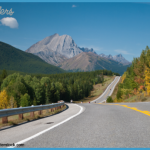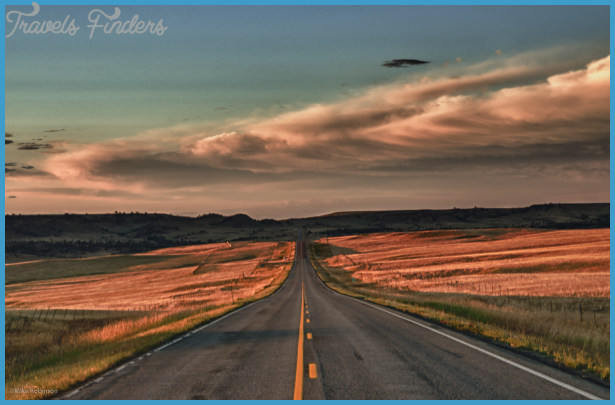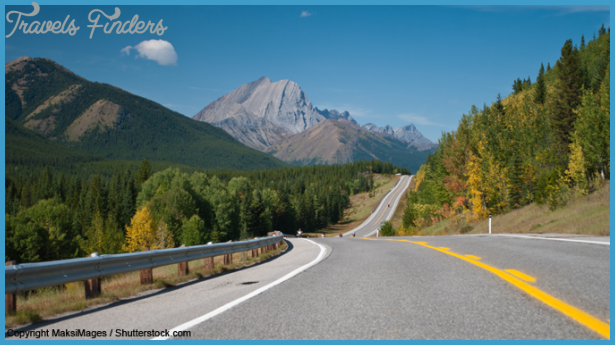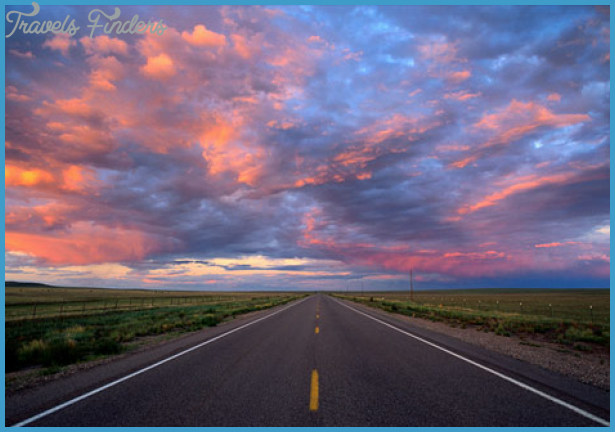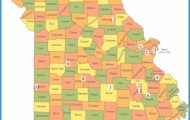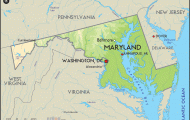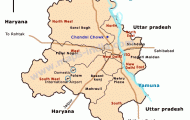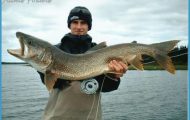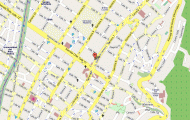Where to begin? We suggest Three Forks (pop. 1,904), a mostly blue-collar community whose economy is tied to agriculture and a talc plant. The most impressive landmark is The Sacajawea Hotel, which had its first heyday around the turn of the previous century. That’s when passengers were dropped at the Milwaukee Road railway station across the street and then rested at the hotel while awaiting a carriage ride to Yellowstone. Three Forks’ fate changed when the railroad extended a spur farther south to Gallatin Gateway, and now the old station is a Chinese restaurant. But the 100-year-old hotel, owned and carefully refurbished by the Folkvord family of Wheat Montana renown, is breathing living history into the community.
Before leaving Three Forks, wander the trails and read the interpretive signs at the 532-acre Missouri Headwaters State Park (406-285-3610). Each summer evening features speakers who recount stories, including tales of Lewis and Clark camping at the confluence of the three rivers and the Shoshone woman Sacagawea’s capture by Hidatsa Indians when she was 13 years old. Heading southwest of Three Forks on US 287/MT 2 west of the Jefferson River, the sod-roofed Parker Homestead, formerly a part of Montana’s state parks system, is still standing on the west side of the highway, though now on private property and blocked from any exploration by a barbed-wire fence.
Where MT 2 and US 287 split near Sappington Bridge over the Jefferson, veer south on 287 toward Harrison (pop. 162). Agricultural lands begin to give way to sagebrush steppe as you continue another 12 miles south to Norris (pop. 131), which is little more than a wide junction in the road with little more than a gas station and the friendly Norris Bar, with a trinket shop in back. Most people hurry through from Bozeman to Ennis, but 1 mile east on MT 84 is a rejuvenated and family-friendly Norris Hot Springs (406-685-3303), aka Water of the Gods. Norris lures locals and tourists in the know for a soak, good eats from a predominantly locally sourced menu, and live music played from a geodome stage on weekends. The intimate pool is emptied and filled daily, but closed on Mondays and Tuesdays for a thorough scrubbing.
Continental Divide Restaurant Bistro, Yesterday’s Soda Fountain Ennis South of Norris, US 287 climbs over a modest pass, revealing majestic views of the Tobacco Root, Gravelly, and Madison ranges above Ennis Lake and the famous Madison Valley. Although the
Madison River is a fisherman’s paradise from source to mouth, the brisk stretch above Ennis (pop. 852), reverently called the 50-Mile Riffle, is famous for its lunker rainbow and brown trout. That Ennis caters to these anglers is obvious from the large sculpture of a fly fisherman in a small plaza at the junction of US 287 and MT 287. For some tasty Montana treats, Deemo’s Meats (406-6827306), formerly Restvedt & Son Meat Market, is renowned for its jerky and smoked meats but also has baked goods, sweet treats, and fresh vegetables. From Ennis, head right on MT 287, which curls south and begins rising to a divide between the Tobacco Roots on the north and Gravellys to the south. After driving past clusters of ranchettes, stop at one of the overlooks and take a sweeping last look at the Madison Valley, with the Madison Range as a dramatic backdrop. Looking due east, you’ll see the treeless Blaze and Lone Mountains, and to the south is a square-jawed buttress called Sphinx Mountain. Once at the summit, you’ll immediately begin the winding drop toward Virginia City (pop. 195). Most of the historic buildings are on the main drag, Wallace Street, west of Broadway. Virginia City and Nevada City both provide informative tabloid-shaped handouts during tourist season for walking tours. Park in Virginia City and get a different view of both towns by taking the narrow-gauge Alder Gulch Short Line Railroad (406-843-5247) to Nevada City and back. The train operates Memorial Day Weekend through mid-September and leaves on the hour.
A requisite stop while visiting Virginia City is to take in one or both of the town’s lively entertainment offerings. The Opera House (406-843-5314, May-Sept.) is home to the state’s oldest professional acting company, the Virginia City Players, who perform classic family-oriented vaudeville Tuesdays through Sundays. In the original Gilbert Brewery building is the more tawdry Brewery Follies (406-843-5218/800-829-2969, May-Sept.), which offers blue humor that can turn any ghost’s face red. Speaking of ghosts, tours of the town’s many haunted buildings are offered at 9 pm each night in the summer.
Unlike its neighboring city, where folks still work and play amid living history, Nevada City is a sprawling open-air museum Rusted mining equipment is scattered about crumbling railroad cars on the south side of MT 287. On the north side, the Boveys have put together an entire community of wooden structures, accessed between the Music Hall and Dry Goods Store. If some of the buildings look vaguely familiar, perhaps it’s because of the scenes from Little Big Man, The Missouri Breaks, and other Western movies filmed here. The town features daily living-history reenactments during the summer, with locals dressed in 1860s garb and engaging in period-appropriate conversations. Try to see the two-story outhouse, the gallows barn where a triple hanging took place, and China Town a tribute to an often-exploited but nevertheless invaluable Asian culture and its contributions to the American West.
After departing Nevada City to the west on MT 287, the placer mounds along the creek become more pronounced as you get closer to a blip on the blacktop called Alder (pop. 116), the railroad terminus for all the mining equipment transported to the gulch. Right before you enter town you’ll find Red Rock Garnet Mine (406-842-5760), where you can pan for gold or try your luck digging for gems. You’re now in the mistakenly named Ruby Valley, so dubbed because when garnets were first discovered here they were confused for rubies. If trout fishing is your gig, the Ruby River below Ruby Dam is great for wading or bank fishing. Much of the Ruby flows through private land, but there are four fishing access sites south of town, and you’re allowed to ply any stretch of a Montana river as long as you stay below the normal high-water mark. At Alder, MT 287 bends north through Laurin (La-Ray), a ghost town of sorts that has a Hangman’s Tree, the stately limestone St. Mary of the Assumption gothic-style church, and the abandoned two-story Robber’s Roost roadhouse on the left side of the highway. At Robber’s Roost, read the story of stagecoach travelers between Virginia City and Bannack who were robbed and terrorized by so-called road agents.







